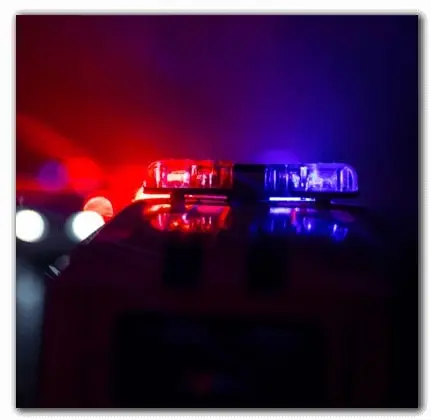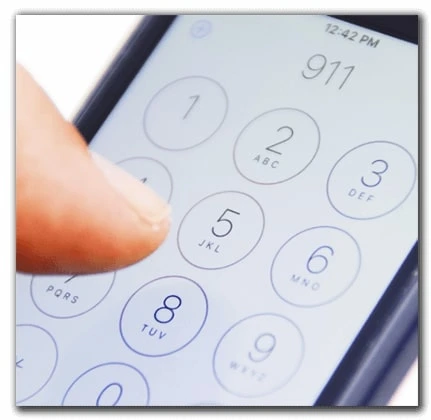Written on Jul 22, 2024.
Emergencies happen, and that is why with Bulk Solution Enhanced 911 service , you can easily attach a US or Canadian address to any number. With our access to the US and Canadian PSAPs/E911 Centers your number does not have to be ported to Bulk Solutions to enable E911 on the number.
E911 is a version of the traditional 911 emergency service that is designed to work with today's VoIP services. Traditional 911 service works over telephone lines, and 911 operators can use the physical address a call originated from to help dispatch responders in the case of an emergency. With VoIP services, pinpointing a caller's exact location is more difficult, Bulk Solutions E911 Service works to identify the location quickly, accurately and provide the information back to the operator.
E911, a location technology advanced by the FCC will enable VoIP phones to process 911 emergency calls and enable emergency services
to locate the geographic position of the caller. When a person makes a 911 call using a traditional phone with ground wires, the call is routed to the nearest public safety answering point (PSAP) that then distributes the emergency
call to the proper services. The PSAP receives the caller's phone number and the exact location of the phone from which the call was made.
Prior to 1996, 911 callers using a mobile phone or VoIP phones would have to access their service providers in order to get verification of subscription service before the call was routed to a PSAP. In 1996 the FCC ruled that a 911 call must go directly to the PSAP without receiving verification of service from a specific cellular service provider.
The FCC has rolled out E911 in two phases. In 1998, Phase I required that mobile phone carriers identify the originating call's phone number and the location of the signal tower, or cell, accurate to within a mile. In 2001, Phase II required that each mobile phone company doing business in the United States must offer either handset- or network-based location detection capability so that the caller's location is determined by the geographic location of the cellular phone within 100 meter accuracy and not the location of the tower that is transmitting its signal. The FCC refers to this as Automatic Location Identification (ALI).
911 service is a vital part of our nation's emergency response and disaster preparedness system. In October 1999, the Wireless Communications and Public Safety Act of 1999 (911 Act) took effect with the purpose of improving public safety by encouraging and facilitating the prompt deployment of a nationwide, seamless communications infrastructure for emergency services. One provision of the 911 Act directs the FCC to make 911 the universal emergency number for all telephone services.

The FCC has taken a number of steps to increase public safety by encouraging and coordinating
development of a nationwide, seamless communications system for emergency services. The FCC has designed and established transition
periods to bring the nation's communications infrastructure into compliance.
In order to deliver emergency help more quickly and effectively, the carriers and public safety entities are upgrading the 911 network on a regular basis. For example, most 911 systems now automatically report the telephone number and location of 911 calls made from wireline phones, a capability called E911.
The FCC also requires wireless telephone carriers to provide 911 and E911 capability, where a Public Safety Answering Point (PSAP) requests it. Once it is implemented fully, wireless E911 will provide
an accurate location for 911
calls from wireless phones.
Other FCC rules regulate 911 for Voice over Internet Protocol (VoIP), mobile satellite services, telematics, and Text Telephone Devices (TTYs). The 911 requirements are an important part of FCC programs to apply modern communications
technologies to public safety.
VoIP is a technology that introduces flexibility as far as the physical location of a particular telephone number. For example, in multisite environments, ranges of numbers can be provided to a business that has numerous premises within a city or even across multiple states. Each number can be assigned to a device in any of those locations by leveraging an existing enterprise WAN infrastructure. Numbers can also be allocated to mobile devices and used anywhere an internet connection is available.
So, with VoIP there is no link between phone numbers and physical addresses like there is for traditional landline telephony. In response to this, the E911 framework has been updated to include what are known as the VoIP E911 regulations.

Provide your accurate physical address to your interconnected VoIP service provider to ensure
that emergency services can quickly be dispatched to your location.
Be familiar with your
VoIP service provider's procedures for updating your address, and promptly update address information in the event of a change.
Have a clear understanding of any limitations of your 911 service.
Inform children, babysitters and visitors about your VoIP service and its 911 limitations, if any.
If your power is out or your internet connection is down, be aware that your VoIP service may not work. Consider installing a backup power supply, maintaining a traditional phone line or having a wireless phone as a backup.
If you have questions about whether the phone service you are receiving is an interconnected
VoIP service, contact your service provider for further information.
911 call centers currently lack the technical capability to receive photos and video. In addition, the ability to send text messages to 911 is only available in certain areas.
For testing your E911 number, we strongly recommend calling our E911 DB Verification service by calling 922@sip.bulkvs.com which will verify your Caller ID number and the address that would be used in case of a real emergency call
In the rare case that you wish to speak to a live emergency operator to verify the information that the operator receives, please use the script below. Please note that some localities require you to schedule E911 test calls in advance and will charge penalties otherwise. You should check with your local authorities before placing any unscheduled E911 test calls. Do not call during the busy hour of lunch or between 4:00-6:00pm. Try to call during off hours such at 6:00am.
Hello, this is a non-emergency call, I'm making a Voice-Over-IP test call. Do you have a moment to verify my emergency information or can we schedule a later time to do so?
Did you receive ANI information? What number do you show? (confirm that this matches the caller-ID/DID number that you expected to send)
Were you able to retrieve ALI information? Can you verify the address that is displayed? (confirm that this matches your intended emergency address)
Do you show my Call Back Number? (confirm that this matches the caller-ID/DID number that you expected to send)
Does the information on your display appear in the proper fields? (the operator should answer yes, which confirms that none of the information fields appeared ordered incorrectly, e.g. the street number in the city field)
You could learn more about E911 via our video below
Bulk Solutions supports E911 via VOIP and SIP Trunks. No need for expensive dedicated links
Your E911 location should be updated anytime a telephone number moves and address.
Business must be complient RAY BAUM's Act and Kari's law. Other laws may also apply and you should always check in with your regulartory resident expert.
Bulk Solutions E911 could integrate in to any SIP VOIP system.
Multi-location E911 is an enhanced emergency response system that allows for accurate identification and routing of emergency calls from various locations within an organization, ensuring that responders can quickly and accurately locate the caller regardless of their specific location within the broader facility.
Multi-device E911 is an enhanced emergency response system that enables accurate identification and routing of emergency calls from various devices, such as smartphones, VoIP phones, and other communication tools, ensuring that emergency responders can locate the caller regardless of the device used to make the call.
Stay Safe!
Bulk Solutions
Call 855-906-0901 or email sales@bulkvs.com